
Introduction
Inside almost all Korean Buddhist temple shrine halls, and standing above the main altar, is a canopy. While this canopy is brilliantly adorned and beautiful, the meaning behind it is less clear. So why are there canopies above the main altar? And why do they have somewhat differing designs?
The Canopy
The Korean Buddhist canopy that stands above the main altar inside a temple shrine hall is known as a “datjib – 닺집” in Korean. “Dat” means “separate” in English, while “jib” means “house” in English. So the canopy literally means “Separate House.” Another name for this canopy is “Celestial Canopy” in English, which is in reference to the airy feel that the roof-shaped structure exudes.
As for the actual material that makes up the canopy, it’s wood. And the woodwork consists of finely made interconnected brackets that have been ornately decorated with a variety of Buddhist motifs. The pillars that support the weight of the canopy are usually thin, which helps contribute to the airy feel of the canopy’s overall design. These pillars are also usually either red or gold in colour. Surrounding the typically red or gold coloured canopy are a variety of images like dragons, phoenixes, lotus flowers, and Bicheon (Flying Heavenly Deities). These four images aren’t the only figures that will appear around canopies, but they are the most common. And they add a certain luxuriousness to the normally solemn interior of a temple shrine hall. In fact, and at a glance, the canopy looks like a mini-palace.
Types of Canopies
In total, there are three different types of canopies that take up residence inside a Korean temple shrine hall above the main altar. They are: 1. “The Cloud Palace Type”; 2. “The Treasure Palace Type”; 3. “The Bejeweled Canopy Type.”
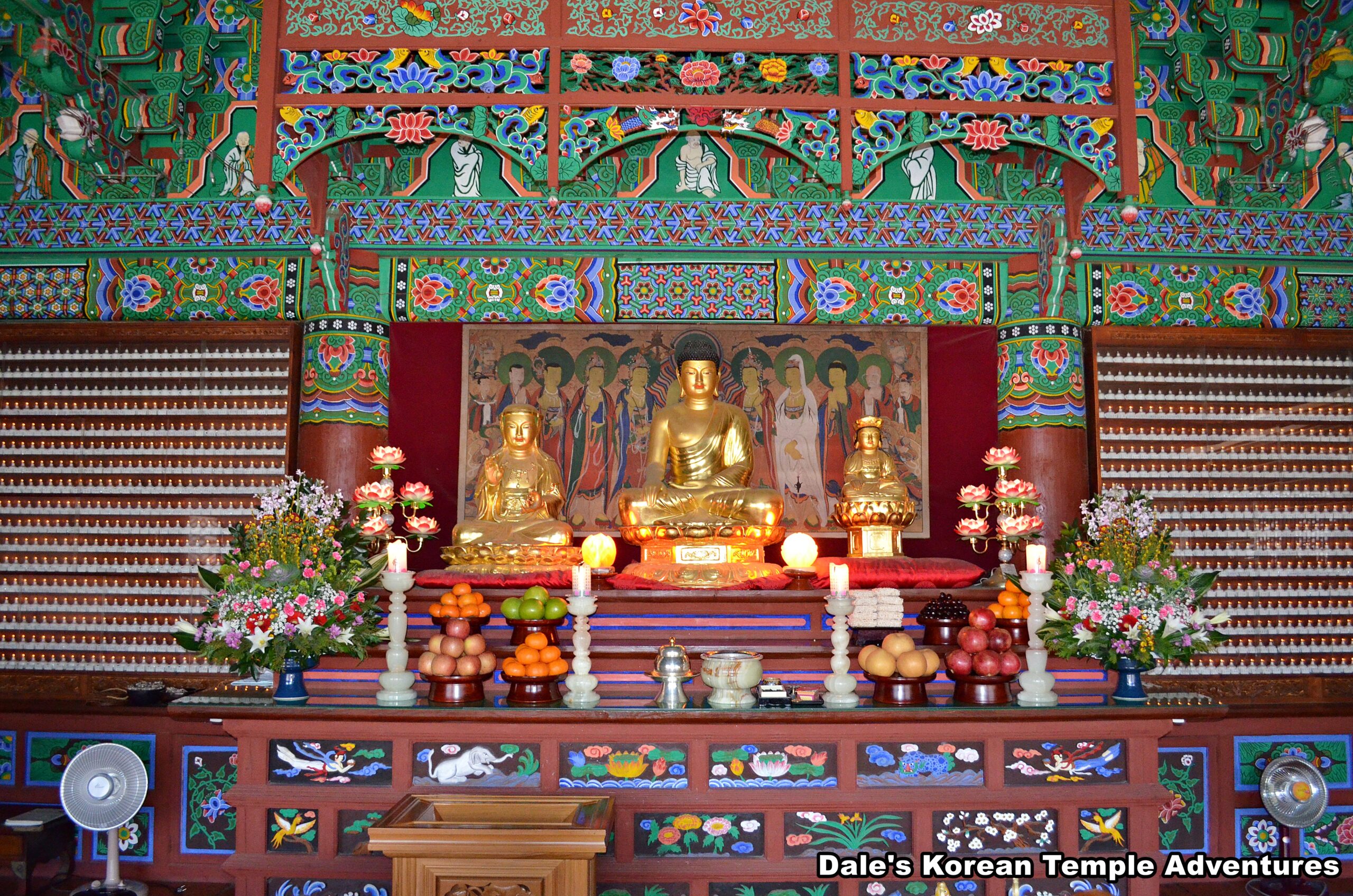
The first of these three, “The Cloud Palace Type,” does not have any brackets in its design. Overall, the design is simple. However, while the design is more simplistic, the canopy area of the design directly above either the Buddha’s or Bodhisattva’s head is more ornate in design with images of clouds, dragons, flowers, and phoenixes. A great example of this can be found at Botaam Hermitage on the Tongdosa Temple grounds in Yangsan, Gyeongsangnam-do.
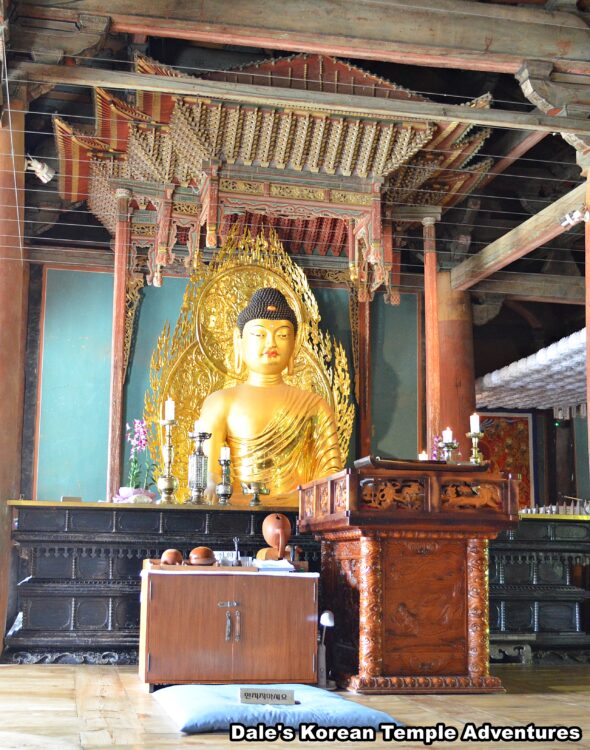
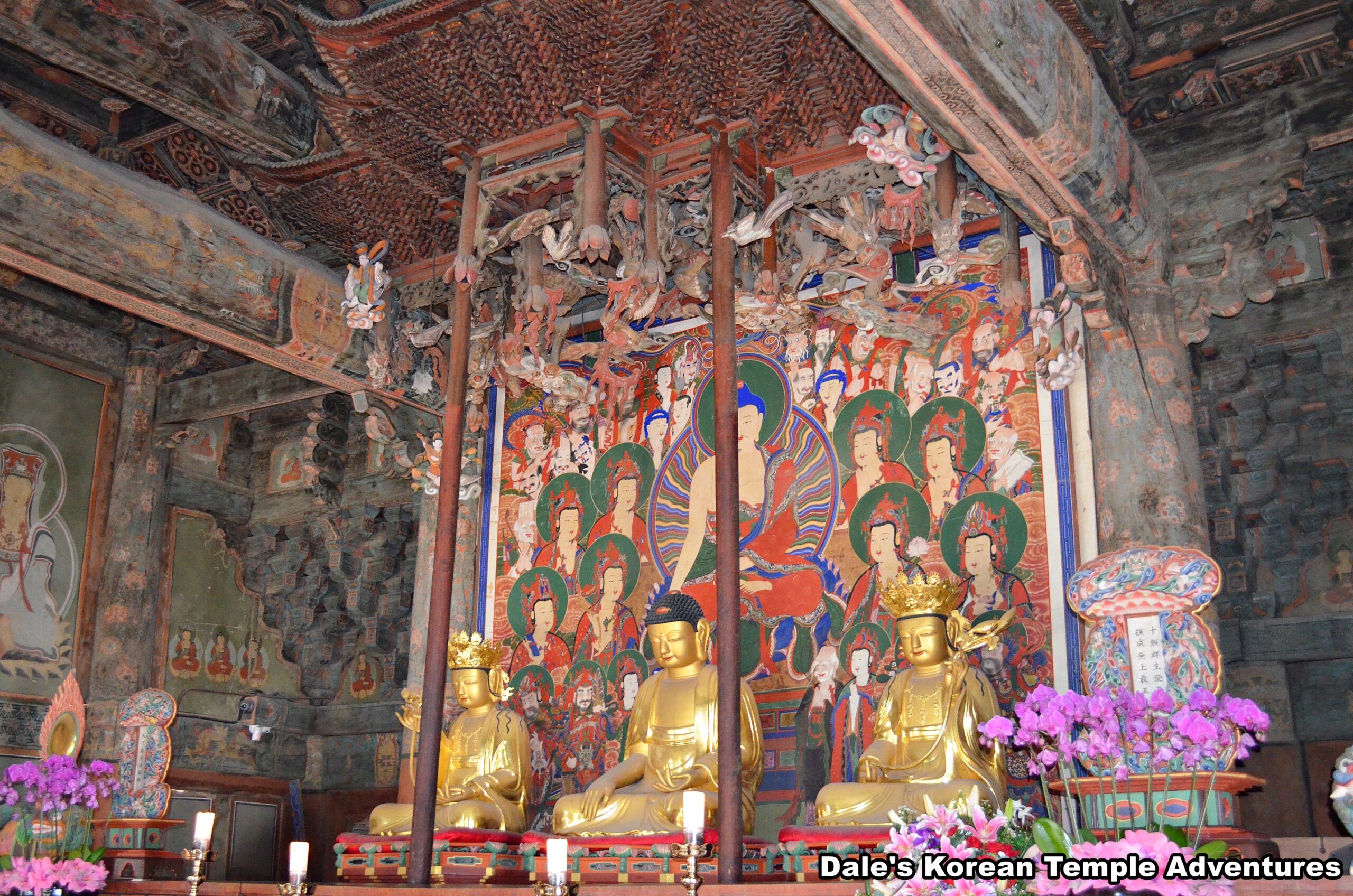
The second type is “The Treasure Palace Type.” This type of canopy design appears as though it’s a completely separate structure. With the passage of time, this type of canopy grew more elaborate. A great example of this type of design can be found inside the Muryangsu-jeon Hall at Buseoksa Temple in Yeongju, Gyeongsangbuk-do and the Daeung-jeon Hall at Beomeosa Temple in Geumjeong-gu, Busan.
And the third, and final, type of canopy design is “The Bejeweled Canopy Type.” This type of canopy is receding into the ceiling. Additionally, there are four sides to this canopy with finely designed brackets. A good example of this style of canopy can be found inside the Daeung-jeon Hall at Donghaksa Temple in Gongju, Chungcheongnam-do.
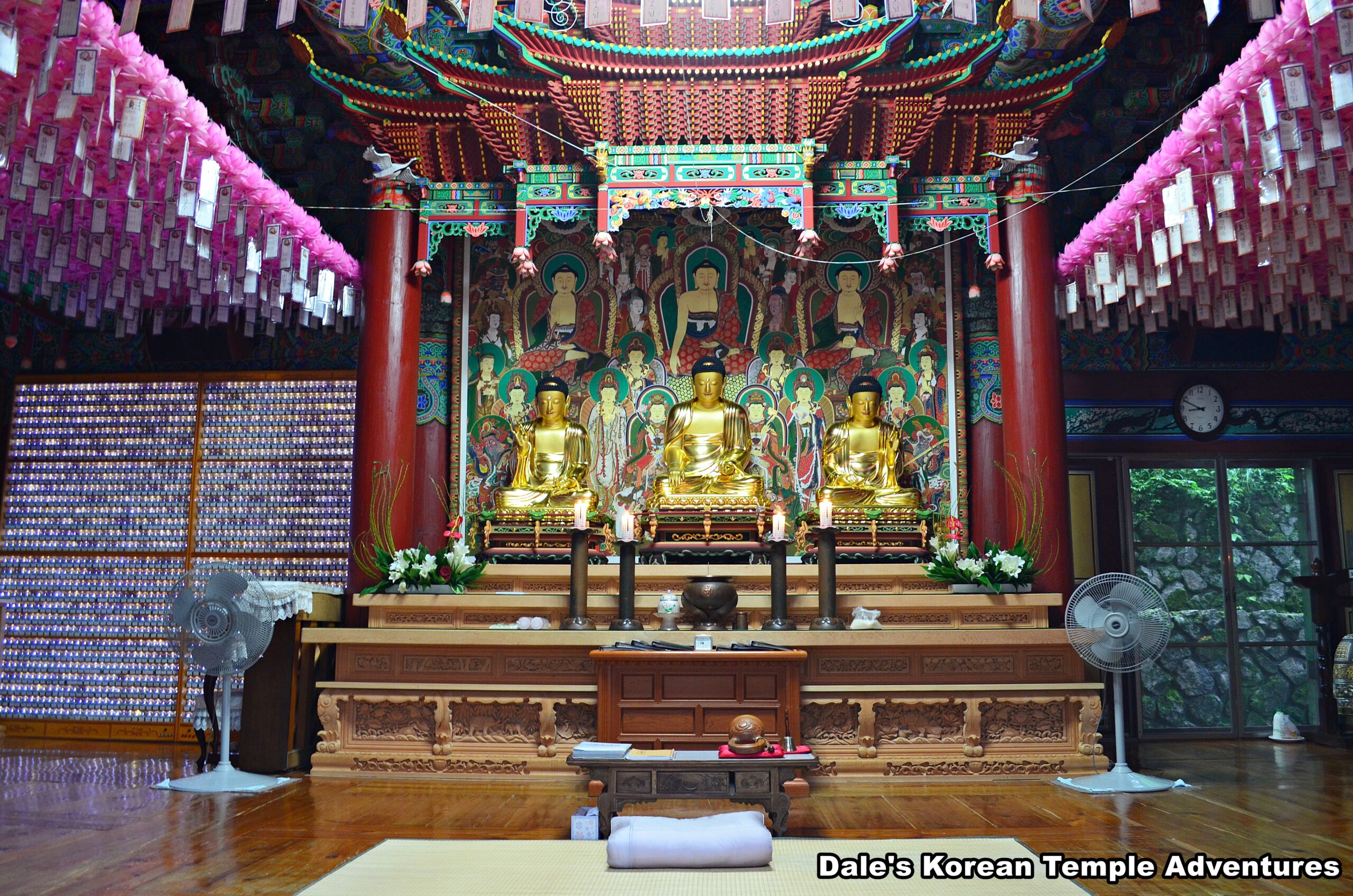
The Canopy’s Meaning
So now that we know what they look like, why are canopies situated above the heads of Buddhas and Bodhisattvas upon the main altar of temple shrine halls? The textual reference appears in the Shorter Sukhāvatīvyūha Sūtra, which is a Mahayana sutra in Pure Land Buddhism. In fact, it’s one of the three principle Pure Land texts. This sutra consists of discourses that Seokgamoni-bul (The Historical Buddha) gave to Śāriputra, who was one of his disciples at Jetavana in Shravasti. These discussions focused on the beautiful and wondrous adornments that await the righteous in the Pure Land. The text also discusses what one must do to be reborn in the Pure Land. The canopy, in this context, is meant to symbolize the beauty that awaits in the Pure Land. More specifically, it’s a beacon in an unclear world which has an endless cycle of rebirth that we presently live. So the canopy acts as a reminder of the Pure Land for those that live in a world tainted by the cyclical existence of Samsara.
Conclusion
So at first glance, while a “datjib” may look like nothing more than a beautiful decorative item, it is packed with the symbolic meaning of the Pure Land. A canopy is a little piece of heaven that reminds people of the potentiality of what could be. So not only is this rather stunning structure beautiful in design, but it’s also loaded with meaning for Buddhists.
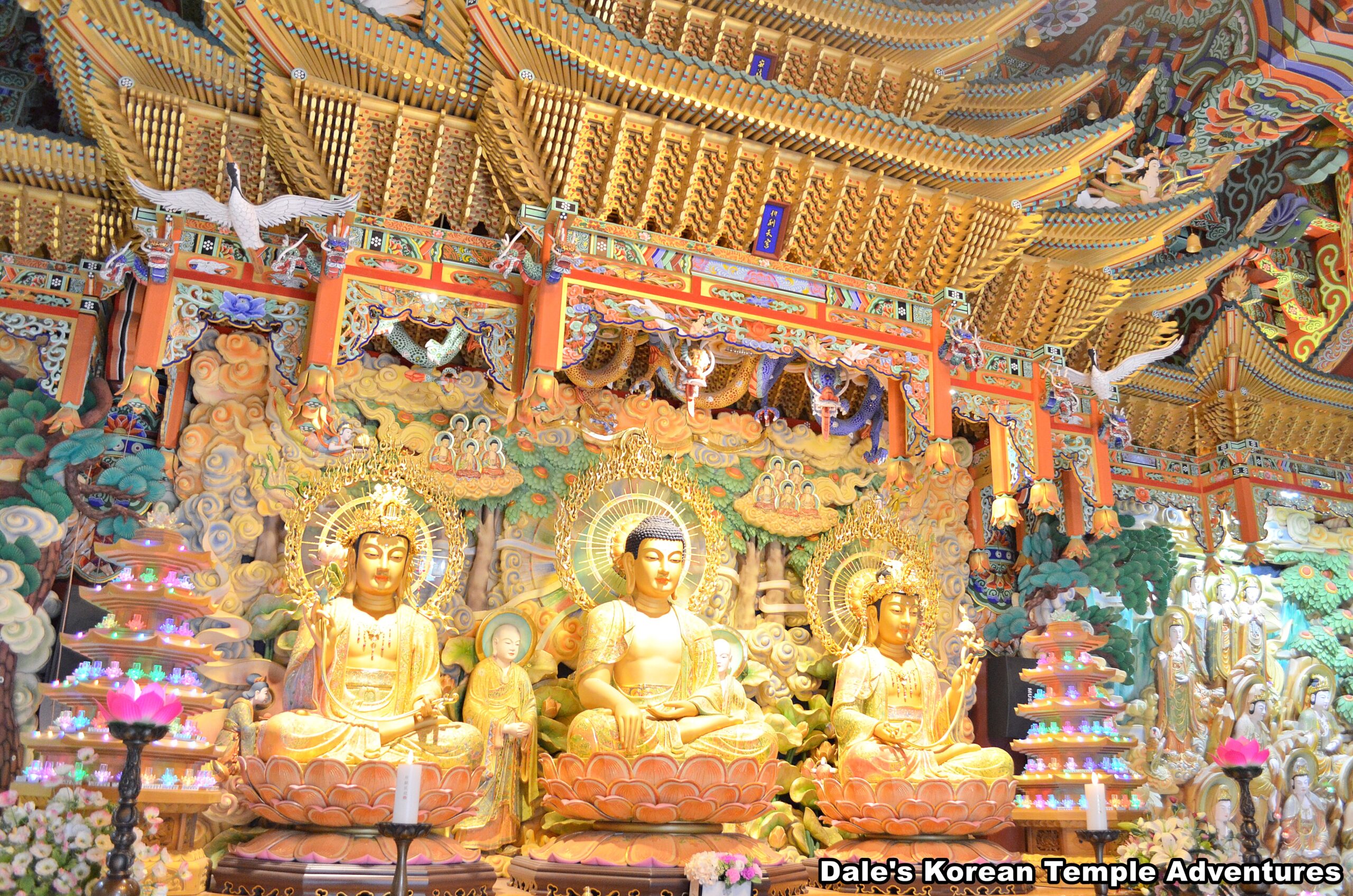
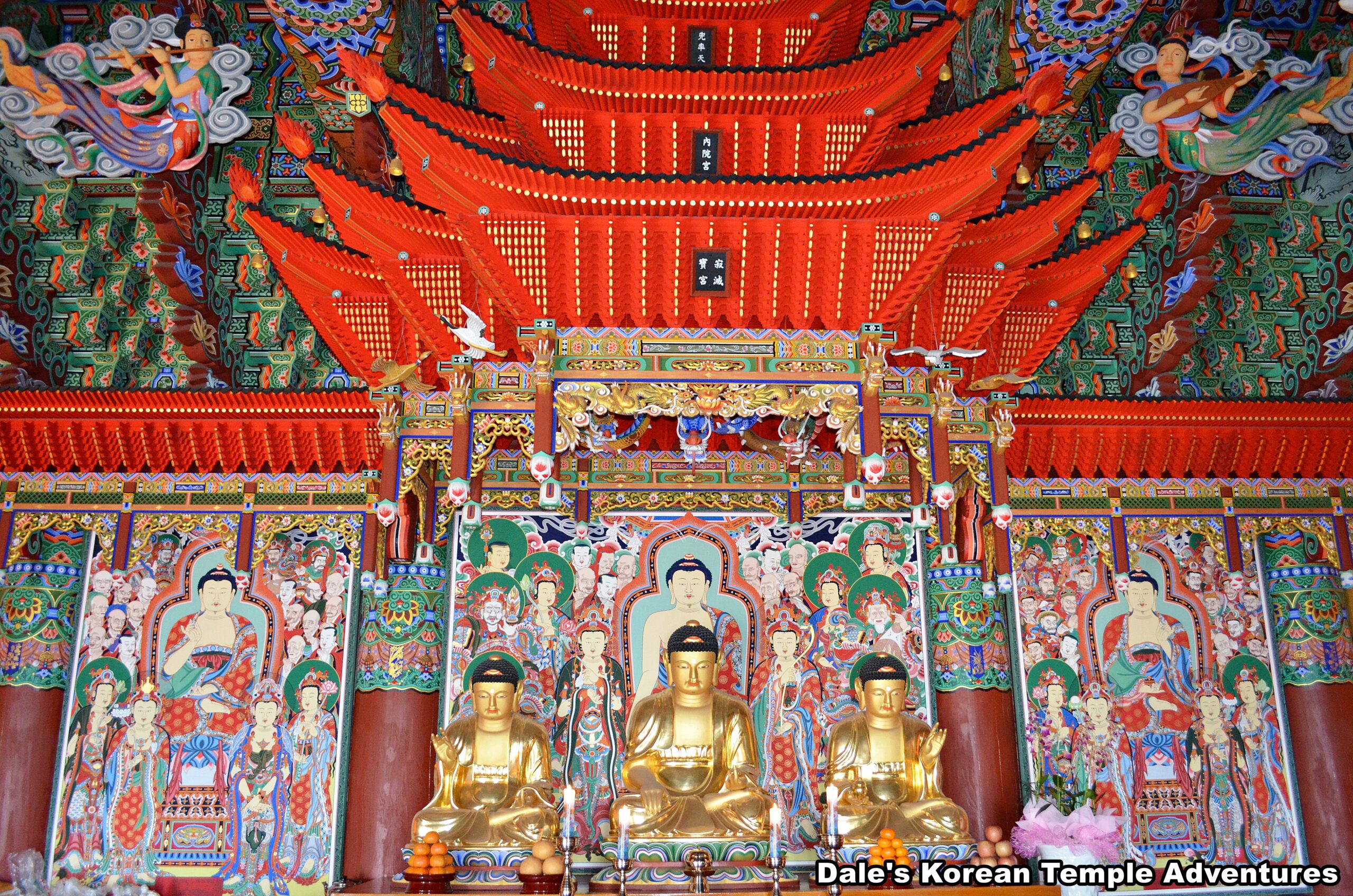


Recent comments